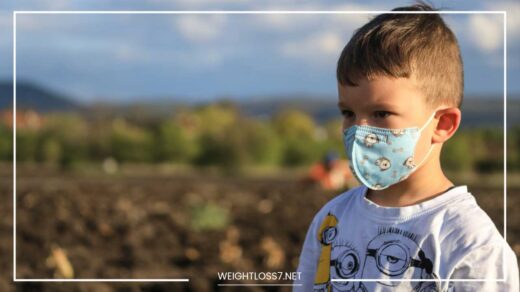How to Get Rid of Stomach Fat

Get Rid of Stomach Fat
Shedding the Spare Tire: Effective Strategies for Reducing Belly Fat
Belly fat, affectionately (or not so affectionately) nicknamed the “spare tire,” can be a persistent foe in the quest for a healthy body. It not only affects our appearance but also harbors significant health risks.
Research links excess belly fat, particularly visceral fat which resides deep within the abdomen, to a higher risk of chronic diseases like heart disease, type 2 diabetes, and even some cancers.
While spot reduction (losing fat in one specific area) is a myth, there are effective strategies to tackle belly fat and improve your overall health. This comprehensive guide will equip you with the knowledge and actionable tips to conquer belly fat.
We’ll delve into the science behind fat loss, explore a variety of dietary and exercise approaches, and debunk some common myths that can hinder progress.
Unveiling the Science of Belly Fat and Its Impact on Health
Before diving into strategies, let’s understand the two main types of belly fat:
- Subcutaneous fat: This lies just beneath the skin and is the jiggly fat you can pinch. It’s a normal part of human physiology and serves as an energy reserve and insulator.
- Visceral fat: This deeper layer of fat surrounds your organs and is more metabolically active. It releases hormones that can negatively impact your health by increasing inflammation and blood sugar levels.
Visceral fat is the primary concern when it comes to belly fat reduction. Studies suggest a strong correlation between excess visceral fat and an increased risk of chronic diseases. Here’s a breakdown of how belly fat can negatively affect your health:
- Heart Disease: Visceral fat releases inflammatory markers that contribute to the buildup of plaque in arteries, a significant risk factor for heart disease.
- Type 2 Diabetes: Belly fat can impair insulin sensitivity, making it harder for your body to regulate blood sugar levels, increasing the risk of type 2 diabetes.
- Metabolic Syndrome: This cluster of conditions, including high blood pressure, unhealthy cholesterol levels, and insulin resistance, is often linked to excess belly fat.
- Certain Cancers: Research suggests a possible link between excess belly fat and an increased risk of certain cancers, such as colorectal cancer and pancreatic cancer.
Understanding the health risks associated with belly fat emphasizes the importance of prioritizing its reduction for a healthier you.
Unlocking the Secrets of Fat Loss: The Calorie Balance Equation
Let’s get down to the scientific basis of fat loss. To reduce belly fat, you need to create a calorie deficit. This means burning more calories than you consume. When this happens, your body dips into stored fat for energy, including belly fat.
Several factors influence calorie burning:
- Basal Metabolic Rate (BMR): The number of calories your body burns at rest for basic functions like breathing, circulation, and cell repair. BMR is influenced by factors like age, gender, and muscle mass.
- Thermic Effect of Food (TEF): The calories your body burns digesting and absorbing food. Protein has a higher TEF compared to carbohydrates and fat.
- Activity Thermogenesis: Calories burned through physical activity. This includes exercise but also everyday activities like climbing stairs or fidgeting.
By understanding these factors, you can create a personalized approach to achieve a calorie deficit. There are various tools and online calculators available to estimate your BMR and daily calorie needs.
Dietary Strategies for Effective Belly Fat Reduction
What you eat significantly impacts belly fat. Here are some key dietary changes to consider, focusing on both what to include and what to limit:
Embrace these Belly-Fat-Fighting Foods:
- Whole Grains: Opt for whole grains like brown rice, quinoa, and whole-wheat bread over refined carbohydrates. Whole grains provide sustained energy, keep you feeling fuller for longer, and are a good source of fiber.
- Fruits and Vegetables: These are packed with essential vitamins, minerals, and fiber. Fiber promotes satiety, helps regulate digestion, and may even aid in belly fat reduction. Aim for a rainbow of colors on your plate to ensure a variety of nutrients.
- Lean Protein Sources: Protein helps build and maintain muscle mass, which boosts metabolism and aids in belly fat burning. Include lean protein sources like chicken, fish, beans, lentils, and tofu in your diet.
- Healthy Fats: Don’t shy away from healthy fats like those found in avocados, nuts, seeds, and olive oil. These fats promote satiety, improve heart health, and may even aid in belly fat reduction. They also play a crucial role in nutrient absorption and hormone regulation.
Limit these Belly-Fat-Promoting Culprits:
- Refined Carbohydrates: Refined carbohydrates like white bread, pastries, sugary drinks, and processed snacks cause blood sugar spikes and insulin surges. This promotes fat storage, particularly around the belly. Opt for whole, unprocessed options whenever possible.
-
Added Sugars: Added sugars like those found in sugary drinks, desserts, and processed foods contribute to excess calorie intake and can promote inflammation, both of which hinder belly fat loss. Be mindful of hidden sugars by reading food labels carefully.
-
Unhealthy Fats: Saturated and trans fats found in fried foods, processed meats, and commercially baked goods can increase bad cholesterol (LDL) and contribute to inflammation. Limit these unhealthy fats and focus on getting your fats from healthy sources.
Dietary Practices for Long-Term Success:
- Mindful Eating: Pay attention to hunger and fullness cues. Eat slowly, savor your food, and avoid distractions while eating. This mindful approach can help prevent overeating and emotional eating.
- Portion Control: Use smaller plates, measure out portions, and avoid mindlessly snacking.
- Stay Hydrated: Drinking plenty of water can help curb cravings, improve digestion, and boost metabolism. Aim for eight glasses of water per day, adjusting based on your activity level and climate.
- Plan and Prepare Meals: Planning and prepping meals ahead of time can help you make healthy choices and avoid unhealthy temptations when you’re short on time.
Debunking Common Dietary Myths:
- Crash Dieting: Restrictive crash diets may lead to initial weight loss, but they’re often unsustainable and can be harmful. Crash diets can deprive your body of essential nutrients, lead to muscle loss, and disrupt your metabolism. Aim for gradual, healthy changes you can maintain long-term.
- Fat-Free Everything: Avoiding all fat can backfire. Healthy fats are essential for nutrient absorption, hormone regulation, and satiety. Include healthy fats from sources like avocados, nuts, and olive oil in your diet.
- Focus on Detox Diets: Your body has a natural detox system – your liver and kidneys. Fad detox diets often lack scientific backing and can be restrictive, leading to nutrient deficiencies and unhealthy eating habits.
Building a Sustainable and Enjoyable Eating Pattern:
Focus on creating a healthy eating pattern you can enjoy and maintain for the long term. Explore different cuisines, experiment with new recipes, and find healthy foods you genuinely love. Here are some tips:
- Incorporate Cultural Cuisines: Many cultures have delicious and healthy dishes that incorporate whole grains, vegetables, lean protein, and healthy fats. Explore cuisines like the Mediterranean diet or Japanese cuisine for inspiration.
- Cook More at Home: Cooking at home allows you to control ingredients and portion sizes. Experiment with new recipes and involve family or friends in the cooking process.
- Find Healthy Alternatives: Craving pizza? Make a whole-wheat crust with lean protein toppings and vegetables. Love sweets? Try a fruit salad with a dollop of Greek yogurt or bake healthy muffins with natural sweeteners.
Remember, consistency is key! Aim for small, sustainable changes that you can incorporate into your daily routine. Over time, these changes will become habits and contribute to lasting success in reducing belly fat and improving your overall health.
We explored the science behind belly fat, its impact on health, and dietary strategies to promote belly fat reduction. Now, let’s turn our attention to the other crucial pillar for success: exercise.
Unveiling the Power of Exercise for Belly Fat Loss
A well-rounded exercise routine is a powerful tool for reducing belly fat and improving overall health. Here’s a two-pronged approach that combines cardio and strength training for optimal results:
1. Cardio: Your Engine for Burning Calories
Cardiovascular exercise, often referred to as “cardio,” plays a vital role in burning calories and reducing overall body fat, including belly fat. Here’s how cardio helps:
- Increased Calorie Burning: Cardio activities like brisk walking, running, swimming, or cycling elevate your heart rate and respiration, leading to a significant increase in calorie expenditure during the workout.
- Improved Insulin Sensitivity: Regular cardio exercise enhances your body’s ability to utilize insulin effectively, regulating blood sugar levels and promoting fat burning.
- Enhanced Mood and Stress Management: Cardio can be a mood booster and a great way to manage stress, both of which can contribute to unhealthy eating habits.
How Much Cardio is Enough?
The American College of Sports Medicine (ACSM) recommends at least 150 minutes of moderate-intensity cardio or 75 minutes of vigorous-intensity cardio per week for adults. You can break this down into smaller chunks throughout the week, aiming for at least 30 minutes of moderate-intensity activity most days.
Finding Activities You Enjoy:
The key to sticking with a cardio routine is finding activities you enjoy. Here are some options to consider:
- Brisk Walking or Running: These are simple and accessible activities that you can do almost anywhere.
- Swimming: This low-impact exercise is easy on your joints and provides a full-body workout.
- Cycling: Whether indoors on a stationary bike or outdoors on a scenic route, cycling offers a fun way to get your heart rate up.
- Group Fitness Classes: Zumba, kickboxing, or spinning classes can provide a fun and motivating way to get your cardio fix.
- Dance: Turn up the music and let loose! Dancing is a great way to burn calories while having fun.
2. Strength Training: Building Muscle for a Boosted Metabolism
Strength training, often referred to as weightlifting, is another crucial component for reducing belly fat. Here’s why:
- Increased Muscle Mass: Strength training helps build and maintain muscle mass. Muscle tissue burns more calories at rest compared to fat tissue, even when you’re not actively exercising. This translates to a higher metabolism and increased calorie burning throughout the day.
- Improved Strength and Endurance: Strength training builds strength and endurance, which can benefit your daily activities and overall fitness level.
- Stronger Core: Core exercises strengthen your abdominal muscles, which can improve posture and support your spine. However, remember that spot reduction (fat loss in a specific area) is a myth. Core exercises alone won’t burn significant belly fat, but they can contribute to a toned midsection when combined with overall fat loss.
How Much Strength Training is Necessary?
The ACSM recommends strength training exercises for all major muscle groups 2-3 times per week. You don’t need to spend hours at the gym; even bodyweight exercises or using light weights at home can be effective.
Strength Training for Beginners:
If you’re new to strength training, it’s wise to start with lighter weights and gradually increase the intensity and duration of your workouts as you gain strength and confidence. Consider consulting a certified personal trainer to create a safe and effective strength training program tailored to your needs and goals.
Combining Cardio and Strength Training for Optimal Results:
For the best results in reducing belly fat and improving overall health, combine both cardio and strength training into your weekly routine. You can alternate cardio and strength training days or even combine them in a single workout if time is limited.
Exercise Myths Debunked:
- Spot Reduction: Unfortunately, you cannot target fat loss in specific areas. Exercise works your entire body, and belly fat loss will occur alongside overall fat loss.
- Ab Exercises Only: While crunches and sit-ups can strengthen your abdominal muscles, they won’t burn significant belly fat. Focus on compound exercises that work multiple muscle groups for a more efficient calorie burn. Examples include squats, lunges, push-ups, and rows.
- No Pain, No Gain: While exercise can be challenging, it shouldn’t be painful. Listen to your body and gradually increase intensity and duration to avoid injury. If you experience pain during exercise, stop the activity and consult a healthcare professional.
Building a Sustainable Exercise Routine:
Here are some tips for creating an exercise routine you can stick with in the long term:
- Start Slow and Gradually Increase Intensity: Don’t try to do too much too soon. Begin with a manageable routine and gradually increase the duration and intensity of your workouts as you get fitter.
- Find Activities You Enjoy: The key is to choose activities you find enjoyable. Experiment with different types of exercise until you find something you genuinely look forward to.
- Schedule Your Workouts: Treat your workouts like important appointments and schedule them into your calendar. This will help you stay committed and make exercise a regular part of your routine.
- Find a Workout Buddy: Having a workout buddy can provide motivation and accountability. You can encourage each other and make exercise more social and fun.
- Track Your Progress: Keeping track of your progress can be a great motivator. Monitor your weight, measurements, or how long you can sustain your workouts. Celebrate your successes and use them to stay motivated.
Remember, consistency is key! Aim for at least 150 minutes of moderate-intensity cardio or 75 minutes of vigorous-intensity cardio, along with strength training exercises for major muscle groups 2-3 times per week.
Lifestyle Changes for Long-Term Success
In addition to diet and exercise, incorporating some lifestyle changes can further support your belly fat reduction efforts and overall health:
- Quality Sleep: Aim for 7-8 hours of quality sleep each night. When you’re sleep-deprived, your body produces more of the stress hormone cortisol, which can promote belly fat storage.
- Stress Management: Chronic stress can also contribute to belly fat accumulation. Find healthy ways to manage stress, such as yoga, meditation, or spending time in nature.
- Stay Hydrated: Drinking plenty of water throughout the day keeps you hydrated, promotes a feeling of fullness, and can even boost metabolism.
- Limit Alcohol Consumption: Excessive alcohol consumption can contribute to weight gain and belly fat accumulation. Limit alcohol intake or consider eliminating it altogether.
Final Word:
Reducing belly fat requires a multi-faceted approach. By combining a healthy diet, regular exercise, and positive lifestyle changes, you can effectively tackle belly fat and improve your overall health and well-being.
Remember, consistency is key. Don’t get discouraged by setbacks; focus on making gradual, sustainable changes that you can maintain for the long term. Celebrate your successes along the way, and enjoy the journey towards a healthier, happier you!

















